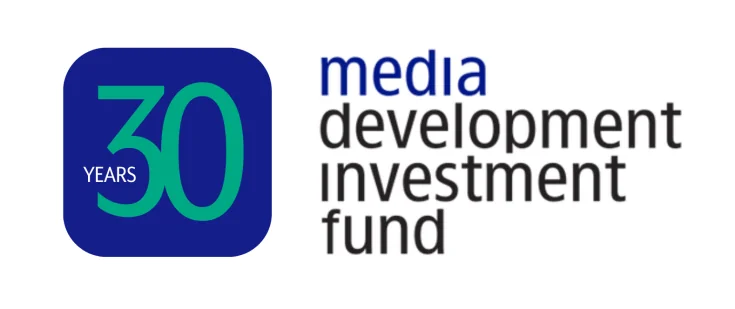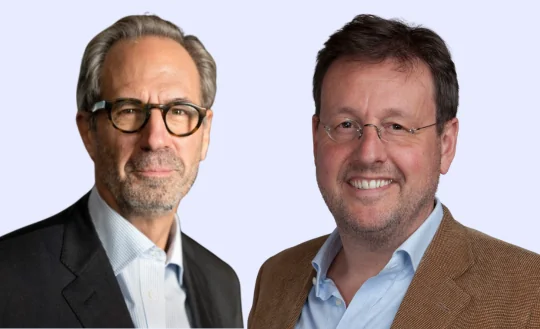By Patrice Schneider and Adriaan Stoop
Fifteen years ago, in the most unassuming of settings, a hurried car ride between Amsterdam and Schiphol, an idea took root between us. The A4 motorway leading to the airport blurred past as we debated the future of independent media, grappling with the persistent question: how can media organizations remain both financially sustainable and true to their public mission in a world increasingly hostile to independent voices?
That conversation, spontaneous and urgent, was less a plan than a hunch. But it was a hunch born of necessity: we sensed that the answer lay not in philanthropy alone, nor in the pursuit of profit for its own sake, but in a new kind of stewardship. Media-owning stewardship entities (MOSEs), we imagined, could be the guardians of editorial independence, entities that would hold media assets in trust for the public good, not for private gain. Media Development Investment Fund has been practicing this delicate balance for decades, functioning as a MOSE by supporting independent media globally while safeguarding their editorial missions.
Building a legacy: From vision to action
That hunch found its first champion in the late Peter Preston, the visionary former editor of The Guardian. Peter’s belief in the power of collective action inspired us to convene a gathering of like-minded MOSEs. Out of those early discussions, the European Press Prize was born, a testament to what can happen when stewardship entities pool their influence and resources. The Prize, initiated by five MOSEs, has since become a beacon for excellence in journalism across the continent, celebrating those who hold power to account and keep the public informed.
Stewardship attracts mission-driven capital
Ten years later, our journey continued north, to Oslo, where we shared a lunch under the auspices of the Tinius Trust, the stewardship foundation behind the Norwegian media group Schibsted. In the welcoming premises of Amediestiftelsen, we saw firsthand how a MOSE could safeguard editorial independence for generations. That meeting was the spark that led to Plūrālis, a blended coalition dedicated to supporting independent media in Europe, catalyzed by the support of the Tinius Trust.
Thanks to the legitimacy and involvement of MOSEs, Plūrālis was born and has since raised more than €52 million, funding that has allowed investee outlets to maintain their independence while reaching nearly 10 million people, securing over 65,000 digital subscribers, generating €52.8 million in annual revenues with steady growth and supporting more than 770 media workers, while earning dozens of journalism awards.
But crucially, the stewardship model’s credibility has attracted a powerful blend of mission-driven capital: foundations, major banks, high-profile reputable media companies and high-net-worth individuals, all united around the shared goal of preserving independent media.
Why now? The democratic imperative
Today, as we witness democratic backsliding and increasing threats to press freedom, the urgency of our original hunch has only grown. We believe the time has come to expand this informal alliance, to bring together more MOSEs, not as a formal institution, but as a network of stewards committed to the public interest.
As outlined in The Third Way of Funding Independent Media, we are convinced that market mechanisms can and should be harnessed to serve societal value, not just private profit. Steward-ownership structures allow media organizations to attract investment and achieve financial sustainability without sacrificing their core mission. By aligning incentives with public interest outcomes, these models offer a “third way” between pure philanthropy and profit-maximizing capitalism, one that is both scalable and resilient. MDIF itself stands as a model of this Third Way, demonstrating how media-owning stewardship can empower independent media while ensuring long-term public benefit.
Towards a media-owning stewardship conversation
Building on this legacy, MDIF will be convening a first-ever informal gathering of leading media-owning stewardship organizations, a Media-Owning Stewardship Group, to explore how mission-driven owners of independent media can better secure the future of public-interest information.
Returning to Amsterdam: A city of media innovation
Amsterdam holds a special place in the story of independent media. In the early 17th century, this bustling city became the birthplace of “corantos”, the world’s first regular newspapers. These single-sheet publications, printed weekly or bi-weekly, carried news from across Europe and beyond, breaking free from government control to provide merchants and citizens with timely, independent information. Amsterdam’s corantos catalyzed the rise of a public sphere where information could circulate freely, fueling the Enlightenment and laying the foundations for modern democracy.
In September 2024, we experienced another epiphany in Amsterdam when we organized a private presentation at the Allard Pierson Museum by Dr. Helmer Helmers on the 17th-century corantos. As we examined these original printed news pamphlets, Dr. Helmers illuminated their origins and their pivotal role in shaping public discourse across Europe. The parallels were striking; just as Amsterdam’s merchants and printers had once pioneered a new model for independent news distribution, we were now working to pioneer new stewardship models for media independence.
It is only fitting that the Media-Owning Stewardship Group’s first gathering should take place in Amsterdam, the city where both public information newspapers were born and where our own journey began 15 years ago on that car ride to Schiphol. Amsterdam represents both the historical roots and the future promise of independent media stewardship.
Patrice Schneider is MDIF Chief Strategy Officer and Adriaan Stoop is Vice-Chair of MDIF’s Board of Directors.

This article is a part of our special 30th anniversary coverage.
